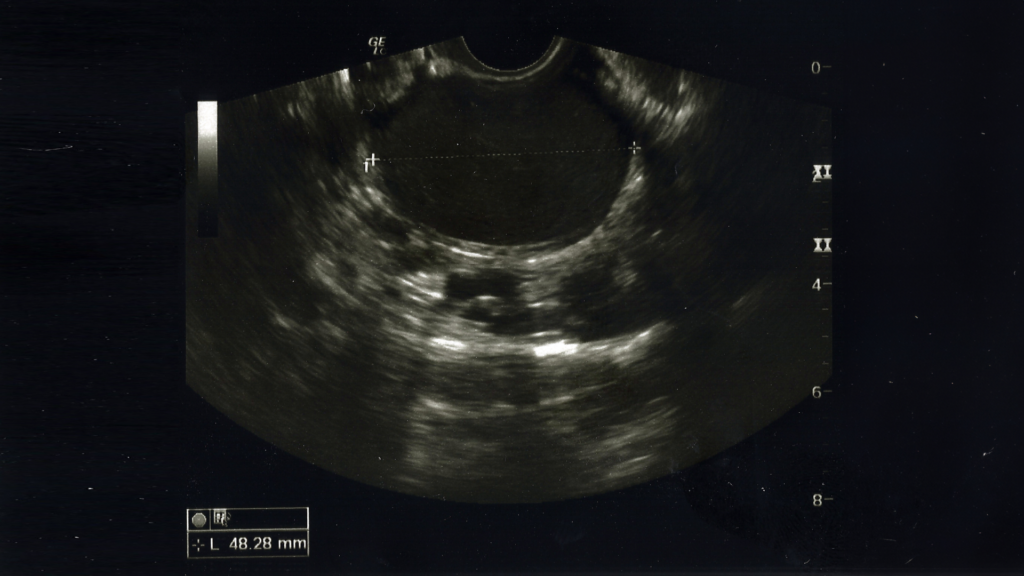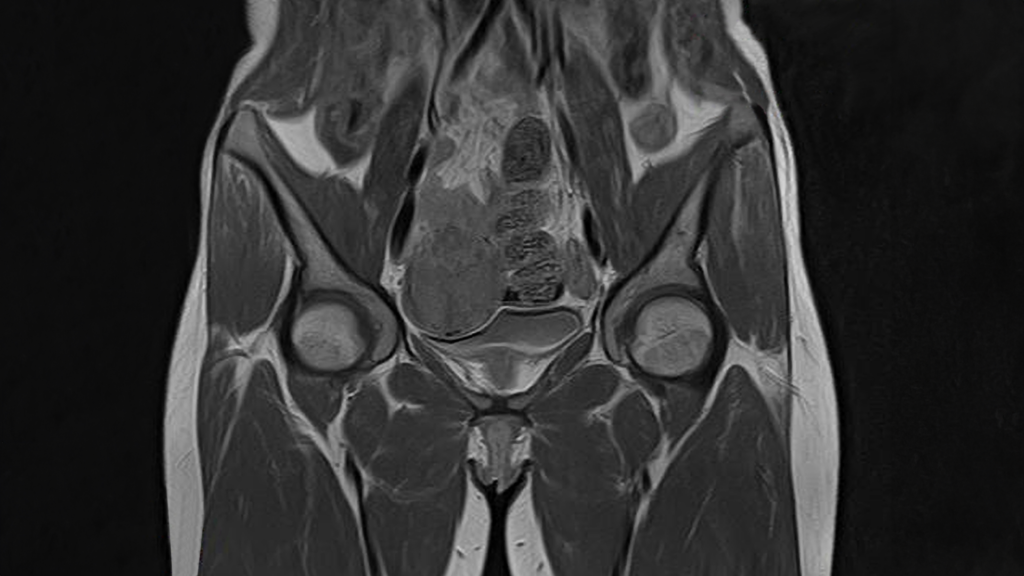20 Weeks Pregnant: What to Expect from Your Anatomy Ultrasound
October 4, 2024
Read More
Pelvic endometriosis is a complicated condition affecting roughly 1 million women in Canada and 11% of women in the U.S. Despite those numbers, endometriosis is not fully understood and it can be difficult to get a clinical diagnosis. Symptoms often vary radically from patient to patient, and some patients can even be asymptomatic.
Endometriosis can be debilitating, causing painful ovulation, heavy bleeding during your menstrual cycle, uncomfortable intercourse, intense fatigue and even infertility. If you’ve been diagnosed or suspect you may have endometriosis, this article will guide you through what the condition entails, the various imaging methods used to detect it, how to interpret your imaging results, and how long the diagnosis process may take.
Many patients receive their imaging reports during a follow-up appointment, but with PocketHealth, you gain instant access the moment your report is uploaded. This is particularly valuable for those managing complex conditions like endometriosis, as it gives you the opportunity to review your results ahead of time. Having this early access helps you better understand your imaging, so you can feel more confident and prepared for an informed discussion with your doctor.
The endometrium is the mucous membrane that lines the inside of the uterus. Endometriosis is a condition in which a similar tissue implants anywhere outside of the uterus.
Healthy endometrial tissue thickens during a menstrual cycle to support a potential embryo. The misplaced endometrial-like tissue also thickens, but since it is not where it’s supposed to be, it cannot be shed during a period. Instead, the endometrial glands and tissue implants form cysts, lesions and other growths, which cause inflammation, pain and scarring.
Endometriosis can occur in any of the pelvic organs: the bladder, fallopian tubes, ovaries or even the pelvic lining. Occasionally it can form adhesions, bands of fibrous tissue which cause pelvic organs and tissue to stick together. There is currently no cure for endometriosis, though there are several types of treatment.
While doctors have gained a better understanding of endometriosis, many aspects of the condition remain unclear. Ongoing research explores theories such as immune system involvement, internal retrograde menstruation, and potential links to hormones or the lymphatic system. Fortunately, the medical community is now taking endometriosis and its impact on patients more seriously. With increased attention on research, there is hope for more answers and improved treatment options in the near future.
The American Society for Reproductive Medicine (ASRM) classifies endometriosis into stages according to the intensity with which it presents in each patient. Stage I is considered minimal, II is mild, III is moderate and IV is severe. It is worth noting that pain levels are often unrelated to the stages. A patient with stage 1 endometriosis may experience even greater pain than someone with stage 4, while other patients may feel no pain at all and only discover their condition through unrelated imaging or tests. Pain and severity are not always correlated.
There are 3 main types of endometriosis:
Endometriosis can spread to areas beyond the reproductive organs, affecting the bowel, fallopian tubes, bladder, and, in rare cases, even regions outside the pelvis, such as the abdomen or chest cavity. Although uncommon, endometriosis has been found on organs like the kidneys and lungs. Some patients may also develop adhesions along the abdominal wall, particularly at surgical incision sites, such as those from a C-section. Additionally, uterine adenomyosis is a condition similar to endometriosis, in which endometrial tissue invades or grows through the uterine muscle wall, but it is not classified as endometriosis. Some patients will experience both adenomyosis and endometriosis at the same time.
Part of the difficulty with diagnosing endometriosis is that symptoms can vary dramatically between patients, both in terms of presentation and intensity. Some of the most common symptoms are:
While itself classified as a “non-cancerous condition”, endometriosis can slightly increase the risk of contracting certain types of breast, cervical or ovarian cancers. However, other determinants like family health history are stronger risk factors than endometriosis.
If you have suspected endometriosis, you may be sent for more than one of the following tests on your way to a clinical diagnosis.

Ultrasound scan showing uterine endometriosis
An ultrasound is an imaging technique that uses sound waves to capture internal images of your body. A transducer produces high-frequency sound waves which create echoes when they bounce off your internal structures, which are compiled into live images.
Depending on the type of endometriosis suspected, you might have a transvaginal ultrasound, in which the transducer is inserted vaginally, or a transrectal ultrasound, in which the wand is inserted into your rectum. You may require an enema for the latter.
Your pelvic ultrasound will likely take around 30 minutes, during which doctors will check for cysts or other signs of endometrial implants. While ultrasounds provide clear images of soft tissues and organs, detecting endometrial tissue can be difficult if it lies deeper or is too small to be seen. Ultrasounds are particularly effective at identifying endometriomas on the ovaries, though endometriosis in other areas can sometimes be missed, potentially requiring further imaging.
For ovarian endometriosis, an ultrasound might show an endometrioma—a cyst filled with dark brown fluid—on the ovary, often ranging from 2 to 5 centimeters. The scan may also reveal scarring, tissue clumps, masses, or organs pulled out of position by adhesions.
While useful as an initial step, ultrasounds don’t offer a definitive diagnosis for endometriosis. Even if your scan appears clear, it’s possible to have endometriosis. If your symptoms persist despite normal results, it may be worth discussing additional testing with your doctor.

Uterine MRI with contrast
Magnetic resonance imaging (MRI) uses radio waves and strong magnets to capture internal images of your body. MRIs are taken from several different views to create a detailed 360° image of your pelvic area. You should avoid eating or drinking for 4-6 hours before your pelvic MRI, which should take 45-60 minutes. If you require a contrast agent, typically administered by IV, your appointment will last at least 30 minutes longer.
A pelvic MRI will result in highly detailed images, which provide a clear view of the entire pelvic cavity, including your ovaries, fallopian tubes, bladder, colon and uterus. A pelvic MRI can reveal deeply planted cysts and lesions, making it one of the better imaging tests for detecting deeply infiltrating endometriosis.
Pelvic MRIs can detect adhesions (dense connective tissue binding internal structures), endometriomas, peritoneal implants on the abdominal wall, tissue thickening, irregular bowel loops, and organ displacements caused by adhesions. However, it’s important to note that early-stage or superficial endometriosis may still go undetected on an MRI. This imaging technique is most effective for diagnosing deep infiltrating or more advanced cases of the disease.
Considered the gold standard method for diagnosing endometriosis, a laparoscopy is a surgical procedure as well as an imaging technique. During laparoscopy, a very small camera on a thin tube is inserted through a small incision made through your abdomen. The camera lights up the pelvic organs, so the doctor can examine the fallopian tubes, ovaries, uterus and surrounding area for endometrial tissue. The doctor may take a biopsy during the procedure to provide a definitive diagnosis of endometriosis.
You should refrain from eating or drinking after midnight prior to this procedure. The laparoscopy itself can take anywhere from 1.5-4 hours, after which you’ll spend 60-90 minutes in recovery. In most cases, you can return home the same day after a laparoscopic procedure.
While this is the most comprehensive and accurate method for diagnosing endometriosis, it is typically considered a later step due to its cost and invasive nature. As a surgical procedure (though minor), medical professionals usually prefer to exhaust other, less invasive imaging options first. However, it is a low-risk and commonly performed surgery that provides detailed information about the severity and location of endometriosis, offering the clearest path forward for treatment.
During your pelvic exam, the doctor will insert fingers into your vagina while placing a hand on top of your abdomen to check for lumps or nodes and to test if pressure or movement causes discomfort or abdominal pain.
A pelvic exam does not take long, usually ten minutes or less, and requires no special preparation. As a diagnostic tool it is not particularly effective. However, it can rule out other potential diseases or conditions.
If your pelvic exam doesn’t reveal any findings, it’s important to understand that this is quite common. Endometriosis often requires several diagnostic tests for confirmation, as a pelvic exam is the least effective method for detecting the condition.
A computed tomography (CT) scan is an imaging technique that takes multiple X-rays from different angles and then compiles them into a 3D image. CT scans are excellent at detecting anomalies in hard internal structures like bones, while softer tissues show up more clearly on MRI scans.
If you’re wondering whether a pelvic CT scan can detect endometriosis, unfortunately this method is not the most effective imaging technique for this condition, as they may not detect endometrial cells or tissue. Likewise, abdominal CT scans are not a good imaging technique for this. However, a CT may be ordered to rule out other issues, such as possible renal insufficiency.
Even with contrast administered, CT scans aren’t sensitive enough to reveal endometriosis and are not recommended for diagnosis.
Similar to CT scans, X-rays are a poor diagnostic method for detecting endometriosis. They lack the sensitivity compared to techniques such as ultrasounds and MRIs.
The technician is not allowed to discuss the results of your imaging test. They will forward the images to a radiologist, who will prepare a report for your doctor. Then your doctor will go over the results with you at a follow-up appointment. The results of your imaging tests will depend on the type of imaging procedure. For example:
What is missing or obscured in one imaging technique may be more visible in another. This is why doctors often request more than one imaging test before returning a clinical diagnosis of endometriosis.
Because endometriosis presents in radically different ways, it can be a long journey to get a clinical diagnosis. Since pain levels vary, it can be years before a diagnosis is sought. Due to size or placement, some lesions will be easier to spot than others, and not all imaging techniques are equally effective in every instance. You may need more than one kind of imaging test to get a clear diagnosis.
When seeking a clinical diagnosis of endometriosis, it is critically important to maintain good records. Keep a journal with you so you can document your symptoms, doctors’ appointments, tests and any results.Because this disease is poorly understood, not all doctors are as familiar with it as they could be. When this happens, it is easy to have your symptoms overlooked.
If you’re not receiving the support or testing needed to address your symptoms, it may be worth seeking a second opinion. Many in the endometriosis community face challenges in getting medical validation, though awareness is improving. Finding a doctor who takes your concerns seriously and provides proper care may take time, but it can make a significant difference in your journey.
To date, there is no cure for endometriosis. But there are several different options for treatment, depending on the severity of your condition and whether you are trying to get pregnant. Some of the options may be more suited for your situation and needs than others.
Analgesics are used to combat the pain of endometriosis. Non-steroidal anti-inflammatories include ibuprofen and naproxen. Acetaminophen and tramadol are non-NSAID analgesics. The type and dosage you use will depend on the type and severity of your pain.
Hormonal therapy treatments may help you manage pain and also slow the growth of endometrial tissue. Your choices include birth control agents, which stop or pause menstruation, like pills, injections, IUDs, and others. Gonadotropin-releasing hormone (GnRH) analogues, used in fertility treatments, are another option.
This technique is usually a treatment for excessively heavy menstruation, which is common for endometriosis patients. The procedure involves the doctor inserting a thin, wand-like device inside your vagina while you are numbed or sedated. The wand will use either cold, electricity or heat to destroy part of your endometrial or uterine lining, which will reduce bleeding.
For endometriosis, doctors will also try this method to destroy the endometrial implants. It used to be considered a standard way to reduce endometriosis symptoms; however, modern specialists liken it to only removing a weed from the surface, not taking it out by the roots, like excision surgery.
Some doctors still use it as their standard for endometriosis treatment, and it may be appropriate for your circumstances. That said, it is sometimes considered less effective and even outdated by some medical professionals. Every patient is different, and there are many circumstances where ablation is a good solution. If your doctor recommends this treatment and you’re uncertain if it is best for you, a second opinion may be a good idea.
Laparoscopy is a tool for treatment as well as diagnosis. Doctors can use laparoscopic procedures to remove endometrial adhesions, peritoneal lesions and scar tissue. The tiny incisions make it a day surgery, which leads to a much shorter recovery time.
Excision surgery is the painstaking, in-depth removal of all abnormal tissues as much as possible. It is considered the most effective method for endometriosis surgery and has the highest rates of success and symptom alleviation. For some patients, the endometriosis may grow back, but the majority find long-lasting relief and better rates of preserving organ function.
Unfortunately, many gynecological surgeons are not trained in this method. It is highly advanced, requires extensive study, and is often poorly compensated by insurance companies.There are only about 100 surgeons in the U.S. who have extensive specialized experience in this type of surgery. If you have advanced endometriosis, however, they may be worth seeking out. Many offer remote consultations, allowing you to determine if they are a good fit and worth possible travel for your surgery.
This is the surgical removal of the uterus. Sometimes the ovaries will also be removed, depending on the presence of large endometriomas or other growths. This recommendation is one that many patients with advanced stages of the disease may encounter. Sometimes it is a fitting suggestion; other times, an excision may be a better first step to try to preserve fertility and organ function. Every case is different. If you are ever uncertain about any surgical recommendation, a second opinion from a doctor with endometriosis experience is helpful. With such a major surgery to consider, weighing your options with specialists can help you find the right fit for your needs.
A laparotomy is an open abdominal surgery that requires a much larger incision. Used both to explore and treat abdominal issues and chronic pelvic pain, a laparotomy requires general anesthesia and has a recovery time of six weeks or more. Laparotomies are rarely performed today.
Endometriosis can have a significant impact on your quality of life, especially if you are suffering from severe pain or infertility. It can help to connect with a support group that understands the symptoms and ramifications. Just remember, you’re not alone. Over ten percent of those assigned female at birth are thought to have this disease and the medical community is taking research and patients far more seriously. There are specialists and support groups to help you along the way and treatment options are improving and expanding. Some countries, like Australia, have legalized workplace protections for endometriosis patients, safeguarding their employment under disability laws even when they have recurring absences due to the disease. Awareness and action are spreading. In the meantime, finding your own support can be immensely helpful.
Getting an endometriosis diagnosis can mean many visits to different specialists and imaging clinics. PocketHealth offers a secure platform where you can access and store all your images and reports throughout the process. Having access to these records helps you better track symptom progression and stay informed, empowering you during your journey to diagnosis.
With PocketHealth, you can view your images and reports as soon as they’re released, often ahead of your follow-up appointments. If a second opinion is needed (common with endometriosis), sharing your results with specialists is seamless.
Understanding medical reports can be challenging, but Pocket Health Report Reader simplifies complex terms, offering plain-language definitions. And the MyCare Navigator feature highlights follow-up recommendations and provides personalized insights based on your imaging, including key questions to ask your doctor. With a clearer understanding of your results, you’ll be better prepared for conversations with your healthcare team.